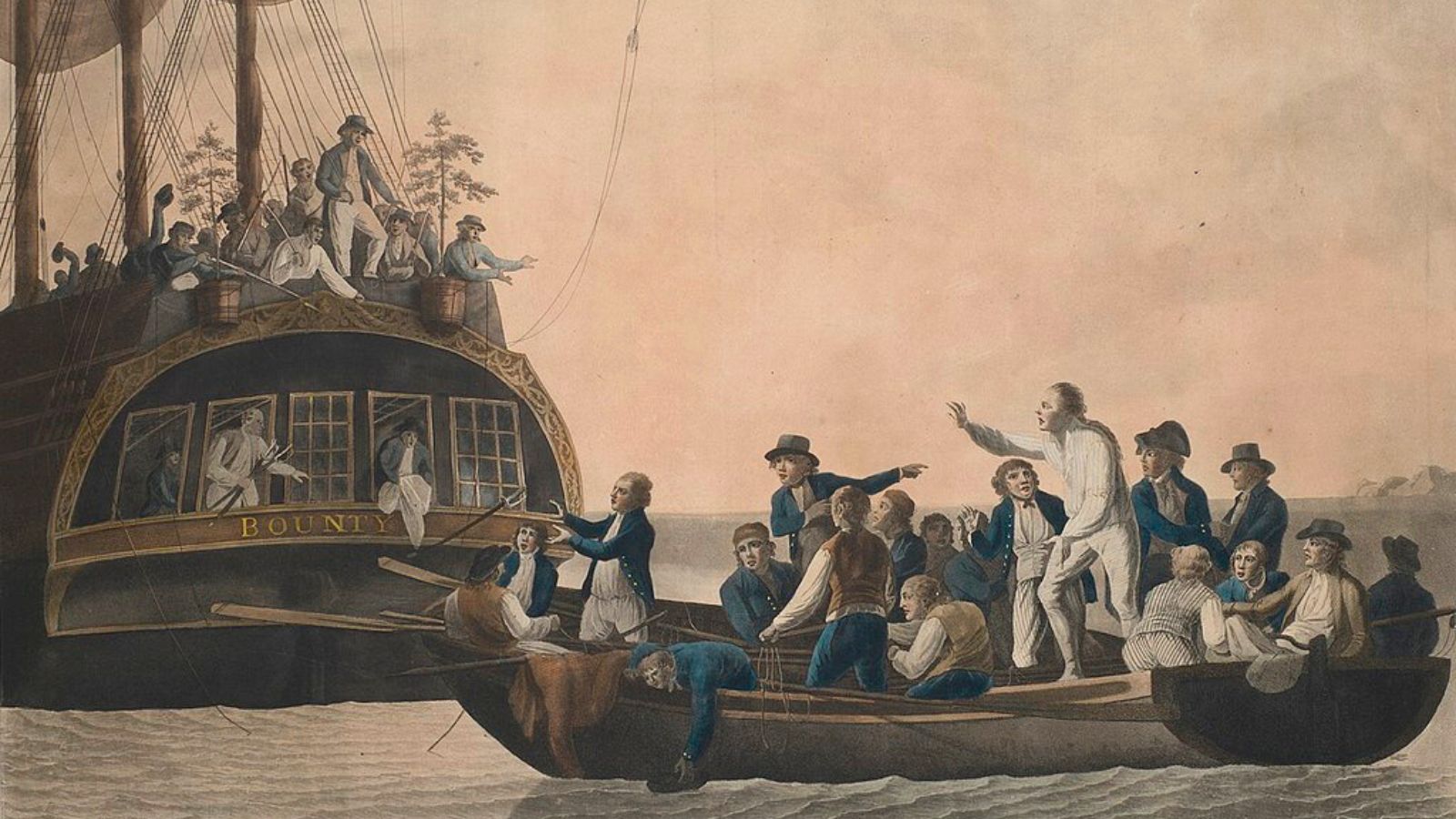Did you know there’s an island in the Pacific Ocean inhabited by the descendants of 18th-century British mutineers?
It’s called Pitcairn Island, and its story is one of the most notorious in maritime history.
A disgruntled crew tempted by the Tahitian paradise, a mutiny followed by a miraculous feat of navigation, retribution from the British Navy, and a fatal shipwreck—not to mention Pitcairn Island itself—are just a few elements that make this tale so compelling.
Here’s what happened.
HMS Bounty Its Voyage to Tahiti
In 1787, a three-masted ship called HMS Bounty set sail for Tahiti. The 46-man crew was led by Captain William Bligh – an experienced sailor with a reputation for being a harsh disciplinarian.
Their mission? Acquire breadfruit plants and deliver them to the British West Indies. The sugar-plantation slaves there (for whom the average life expectancy upon arrival was just seven years) needed feeding, and breadfruit was deemed a cheap and nutritious way to do it.
Anyway, after a brutal 10-month voyage, the men spent the next 5 months living it up in Tahiti.
They revelled in the Tahitian way of life, adopted its customs, and, in some cases, married native women. Ultimately, they didn’t want to leave…
The Mutiny and Arrival on Pitcairn Island

With the breadfruit loaded aboard, Bligh and the crew finally left Tahiti in April 1789 and set sail for the West Indies. 23 days later, somewhere near Tonga, mutiny broke out.
A group led by the master’s mate, Fletcher Christian, cast Captain Bligh and 18 men loyal to him adrift in a small boat. They took the Bounty and returned to Tahiti. Many stayed there, but others, including Fletcher, continued on, hoping to evade the Royal Navy and retribution.
Eventually, in 1790, with a small cohort of Tahitian men and women whom they’d “brought along” (there’s speculation they were kidnapped), the mutineers ended up on Pitcairn Island. To avoid detection, they burned the HMS Bounty in a bay now known as Bounty Bay.
They stayed undetected until 1808, when the Boston sealer called Topaz, commanded by Captain Mayhew Folger from Nantucket, stopped at Pitcairn Island and stumbled upon the survivors. By then, only one mutineer remained: John Adams. Folger found him there with a number of Tahitian women and their children.
Fletcher Christian’s death is a subject of dispute – Adams’ account of how he died varied – but he may have been killed in 1793 in a conflict with the Tahitian men.
Adams died years later, aged 61, on 5 March 1829. By then, he’d recounted the story to numerous visitors who had made their way to the island he’d made home.
According to Wikipedia, there are currently around 35 people living on Pitcairn Island, many of whom are direct descendants of the original mutineers.
What Happened to Bligh?
Remember the men who stayed in Tahiti? Their fate was slightly different.
Somehow, after being cast adrift in that little boat with 18 of his men, Bligh managed to navigate 3600 miles of ocean without a map to a Dutch settlement on the island of Timor. He eventually made it back to Britain, where he reported the mutiny.
In late 1790, the British Admiralty sent HMS Pandora to find, capture, and bring to justice the mutineers. The Pandora reached Tahiti in March 1791. Over the next two weeks, the crew captured 14 men from the HMS Bounty and locked them in a cell onboard the ship. Apparently, the prisoners named it “Pandora’s Box.”
The return journey didn’t go to plan, though. The Pandora sank after running aground on the Great Barrier Reef. 31 people died, including four of the mutineers.
Nevertheless, the remaining Bounty crew were eventually returned to Britain, where they were tried. Three were sentenced to death by hanging, four were acquitted, and three were pardoned.
And Bligh? He ended up becoming Governor of New South Wales in Australia before returning to England, where he died in 1817.

